I need to make a graph from a time series which has in the first column a group variable with 2 levels, in the second another group variable (smaller group) with 22 levels, followed by 427 variables that code for days with a numeric outcome. Something like this:
VT Medication V1 V2 V3 V4 V5 V6 V7 V8
1 1 0 1 1 1 3 3 3 3
1 2 0 1 1 1 2 1 1 1
1 3 0 2 2 2 0 0 0 0
1 4 1 1 4 5 6 4 0 0
2 1 1 1 3 3 3 3 3 3
2 2 etc
2 3
2 4
now I want to make two plots, one with from the VT group 1, and the second from VT group 2 with the numeric outcome on the y-axis and the days on the x-axis. I also want it to be a cumulative graph, distinguishing the contribution to the graph by color. I was thinking that it would look almost the same as doing stacked columns per day and putting them next to one another. however if possible i would want it to be smooth lines, like stacking lines of an interaction plot on top of another.
it would have to look like a graph with 22 layers with different colors coding for the 22 "medication" -groups.
I hope it's somewhat clear what i want from this description. Dirk
